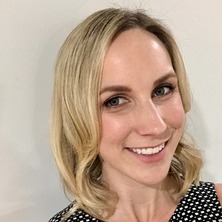
Anyone who’s slaved over a school sausage sizzle may not be surprised to learn that parents and friends raise an average $752 a year for every state school student in Australia.
But University of Queensland education expert Dr Anna Hogan says some important sociological questions are sizzling alongside all those sausages.
“Australian schools are using inventive fundraising methods and it’s important that governments, teachers and parents have the information to consider the effects and implications of underwriting public education this way,” Dr Hogan said.
“The significant sums flowing into state education from private income sources – $1.8 billion for Australia’s 2.5 million state school students in 2015 – poses questions and challenges that have not been well researched.”
 The Australian Research Council agreed and has awarded Dr Hogan $427,882 to investigate the issue in the next three years.
The Australian Research Council agreed and has awarded Dr Hogan $427,882 to investigate the issue in the next three years.
The education expert said assumptions that public schools were ‘free’ needed to be broken down.
“People are increasingly aware that parental fees and contributions as well as fundraising in public schools has become the norm, to prop up perceived government funding deficits,” Dr Hogan said.
“We know from previous research that the schools most successful at fundraising are those with established philanthropic relationships with their alumni and local businesses in their communities.”
Parental contributions, fees and charges tend to rise with a school’s relative socio-economic advantage, she said, meaning the distribution of these contributions across schools was uneven.
“It’s intriguing that schools’ other private income sources – donations, trading, asset sales and fundraisers – do not follow the same socio-economic trend,” she said.
“It highlights a significant gap in our current knowledge about how Australian public schools develop, maintain and evaluate philanthropic relationships.
“The research will look at school governance and investigate the role of the private sector in public schools, as well as address broad concerns about systemic equity and fairness of government school funding.”
People were noticing corporate advertising on school noticeboards, in newsletters, on classroom walls and emblazoned on sports equipment, but Dr Hogan said fundraising was mostly difficult and time consuming and relied on significant support from volunteers.
Despite this, she said some public schools raised up to $1 million a year.
“Hats off to all those supporters who raise such significant sums in support of students’ learning across Australia,” Dr Hogan said.
“They are buying computers, library books, teaching and learning resources, funding air conditioning and renovating schools to look more like their private school counterparts.”
One P&C president reported to Dr Hogan that “little bake sales and sausage sizzles” were losing favour but Bunnings sausage sizzles could raise around $3000.
“That’s a pretty good return on investment, if you can recruit enough volunteers,” the fundraiser said.
“But mostly we do online auctions, recruit business partners from the community and write countless grant applications. Truth is, we won’t do anything unless we make more than $1000. And we’re small fish.”
Twenty-one UQ researchers received a total $9.1 million in the Discovery Early Career Research Awards (DECRA) scheme, from 200 recipients who were awarded a total $84 million.
Contact: Dr Anna Hogan, a.hogan1@uq.edu.au; +61 7 3365 6985; 61 (0)410 136 087.
.jpg)











